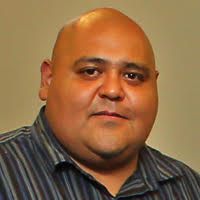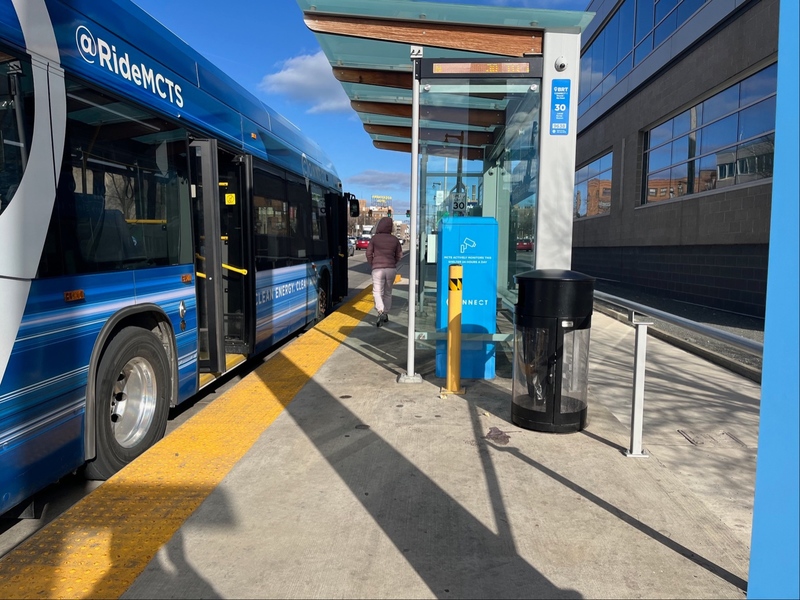Some Milwaukee residents are frustrated over traffic-calming measures implemented by the city in recent years, based on neighborhood chatter and online discussions.
“Sometimes you get stuck at an intersection for three or four lights because one person is turning left and you can’t pass on the right side,” said Ray Davis, who lives in Milwaukee’s Lincoln Village neighborhood.
Davis and others are frustrated that curb extensions, traffic-calming poles, roundabouts and other engineering changes narrowed the streets and bogged down traffic but haven’t stopped reckless driving.
The changes are all aspects of Vision Zero, an initiative adopted last year in Milwaukee that aims to eliminate driving deaths by 2037. Milwaukee has been plagued for years by reckless driving-related deaths and injuries and unsafe driving in general.
Christina Russo, who lives on the far South Side near West Layton Avenue, said the changes hurt good drivers.
“Most of these measures only work to slow law-abiding drivers, which can cause more congestion and ultimately makes inpatient folks more impatient,” Russo said.
Frustrations mount
Some residents said they are frustrated by the changes in traffic patterns and the lack of information shared about them.
City Engineer Kevin Muhs said the reason for the changes is to slow people down.
“The goal of traffic-calming projects and improvements is to create safer driving by lowering speeds, which highly correlates with whether someone is killed,” Muhs said.
Muhs said concrete bump outs and curb extensions, two of the most visible changes, are meant to stop drivers from making a highly risky maneuver.
“Passing someone on the right is dangerous for pedestrians and other cars and allows people to reach high speeds in heavy traffic,” he said.
In 2023, 491 curb extensions were installed at different locations in Milwaukee, compared to 211 in 2022 and 63 in 2021, according to data provided by the City of Milwaukee.
Speed bumps criticized, praised
Another measure that has drawn the ire of some residents and praise from others are speed humps, commonly referred to as “speed bumps.”
“The speed bumps are working on (West) Pierce,” said Julio Guerrero, a former political organizer in Milwaukee. “Before that, it was fast and furious on that street.”
Angalee Jacobs, a tax preparer in Milwaukee who often travels on West Greenfield and West Lincoln avenues, said the speed bumps are hard to see at night and after snow falls – a lesson her son learned the hard way recently.
“My son hit a speed bump that wasn’t visible at night and blew his motor,” said a frustrated Jacobs. “So, if the purpose is to do damage, it works as it should.”
One of the more confusing changes for residents was implemented in June on West Lapham Boulevard from South Sixth Street to South Cesar Chavez Drive.
Traffic-calming poles installed there reduced the boulevard from four to two lanes, moving parking spots to what had been the outside driving lane and converting the parking spots into bike lanes.
“People still don’t care,” said Olga Otero, who lives on Lapham Boulevard. “They park and drive in the bike lane.”
That engineering change resulted in a reduction in speed (25 miles per hour compared to 30 before) and fewer drivers going 10 miles per hour over the speed limit (3% to 0%), according to sample speed data provided by the City of Milwaukee.
Vision Zero plans in motion
Jessica Wineberg, policy director for Vision Zero, said a key element of the plan is to prioritize safety over speed.
“Cars going very fast hurt people. We need to retrofit our roads so that drivers, our neighbors, our children and our friends are all safe,” Wineberg said.
Celia Jackson, a volunteer for the Coalition for Safe Driving MKE, said the main problem with the traffic-calming changes is the lack of communication about them to residents.
“When people don’t have a good understanding about why things are being put into place, that’s a lost opportunity to educate people about how the changes help to calm the traffic,” Jackson said.
She said she’s spoken to many residents about the measures, including bikers, pedestrians and drivers who are happy with them, while others are frustrated.
“I think people could have a better appreciation of the work that’s being done if they have a better understanding of it,” she said.
Muhs said criticism about the lack of information being shared with residents is fair, and that the city is working to grow the capacity at the Department of Public Works to improve communication.
“Yes, absolutely we need to communicate more to the public about where the changes are going to go and when and why,” Muhs said.
Wineberg said funding for Vision Zero will allow for the hiring of a second staff person who will focus on education and a youth ambassador.
The city held open house meetings last week to discuss Vision Zero at the Office of African American Affairs, 4830 W. Fond du Lac Ave., and the Mitchell Street Library, 906 W. Historic Mitchell St.
More changes coming
Muhs said that while the city begins work to help drivers and others understand the traffic changes, the traffic-calming measures will continue.
Plans this year include the installation of raised crosswalks at about 20 schools and more of what residents are already seeing.
“We’re not planning to slow down here. We’re going to keep moving on more traffic calming projects,” Muhs said.
Regardless of the changes, Wineberg said, the community still faces the challenge of preventing deaths from reckless driving.
“Those are the types of tragedies we want to stop,” she said. “It’s worth it to have to give a little time to get where you’re going if it saves lives.”
Mendez, who is bilingual in English and Spanish, graduated from UW-Milwaukee, with a double major in Journalism and Media Communications and Sociology. In 2008, he won a Society of Professional Journalists' regional award for social columns dealing with diverse issues such as poverty, homelessness and racism. Currently, he's a master's degree student at the Diederich College of Communication at Marquette University.
His interests include scholastic research, social networking and the Green Bay Packers.







